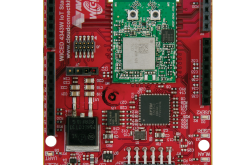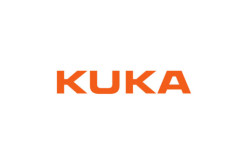Securing the Industrial Internet of Things: Challenges and Solutions

The Industrial Internet of Things (IIoT) is revolutionizing industries by enhancing operational efficiency, enabling new business models, and streamlining processes. However, the increasing interconnectedness of devices and systems also brings a heightened risk of cyber threats. Therefore, it is crucial to address the challenge of securing the IIoT to ensure the safety and reliability of industrial systems.
Securing the IIoT poses several challenges, including the scale and complexity of interconnected systems. With thousands of devices, sensors, and control systems involved, a one-size-fits-all security solution is not feasible. A comprehensive approach is required, considering the specific security needs of each component.
Problem: The Industrial Internet of Things (IIoT) presents several challenges when it comes to security. These challenges include the scale and complexity of interconnected systems, the presence of legacy equipment with outdated security measures, organizational and cultural barriers, and the evolving nature of cyber threats.
Solution:
1. Comprehensive Security Strategy: Develop a holistic security strategy that addresses the unique risks and requirements of the industrial environment. This strategy should include risk assessment, vulnerability identification, and prioritization of security measures based on risk levels.
2. Device Configuration and Updates: Ensure that all IIoT devices and systems are properly configured and regularly updated. Implement strong authentication and access controls to prevent unauthorized access. Regularly patch software and firmware to address known vulnerabilities.
3. Network Segmentation: Segment the IIoT network to limit the potential impact of a security breach. By separating devices into different network segments, organizations can isolate compromised devices and prevent lateral movement of attackers within the network.
4. Intrusion Detection and Prevention Systems: Implement robust intrusion detection and prevention systems to monitor network traffic and identify potential malicious activities. These systems can help detect and respond to security incidents in real-time.
5. Legacy System Upgrades: Identify and prioritize the upgrade or replacement of legacy systems that lack adequate security measures. While this may be a costly and time-consuming process, leaving vulnerable systems unsecured can pose significant risks to the entire IIoT network.
6. Employee Training and Awareness: Invest in training programs to educate employees about the importance of cybersecurity and their role in protecting the IIoT. Provide regular updates on emerging threats and best practices and conduct hands-on training exercises to enhance employees’ ability to detect and respond to security incidents.
7. Collaboration between IT and OT: Foster collaboration and knowledge sharing between IT and operational technology (OT) teams. This collaboration ensures a unified security strategy that addresses both digital and physical aspects of industrial systems. It includes sharing information about potential threats, coordinating incident response efforts, and jointly developing security technologies and solutions.
8. Data Privacy and Protection: Implement robust encryption techniques, access controls, and data governance frameworks to protect sensitive IIoT data. Comply with relevant data protection regulations to ensure the confidentiality and integrity of data.
9. Continuous Monitoring and Threat Intelligence: Implement real-time monitoring tools and advanced analytics to detect and respond to potential security incidents promptly. Leverage threat intelligence feeds and collaborate with industry peers to stay updated on emerging threats and fortify defenses.
10. Emerging Technologies: Explore the use of emerging technologies such as artificial intelligence (AI) and blockchain to enhance IIoT security. AI-based anomaly detection systems can improve threat detection capabilities, while blockchain technology can provide tamper-proof and transparent transaction records, ensuring data integrity and trust.
By addressing these challenges and implementing these solutions, organizations can enhance the security of their IIoT systems, protect critical infrastructure, and mitigate the risks associated with cyber threats in industrial environments.
Investing in employee training and awareness programs is also key. Employees must understand the importance of cybersecurity and their role in protecting the IIoT. Collaboration between IT and OT teams allows for the development of a unified security strategy, addressing both digital and physical aspects of industrial systems. Partnering with external experts and industry groups helps stay informed about emerging threats and best practices, adapting security strategies accordingly.
In conclusion, securing the IIoT requires a comprehensive approach and ongoing commitment. By addressing technical, organizational, and cultural barriers, implementing robust security measures and best practices, and fostering collaboration, industries can safeguard critical systems and infrastructure while benefiting from the advancements of the IIoT.
Content: Anissh














